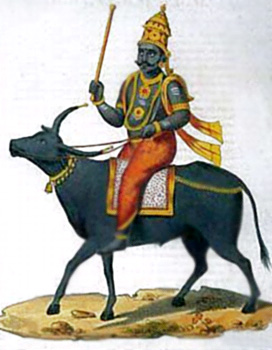 The torment of hell is what lies in Karmavipaka in Narada Purana. Sinners are sent to hell where they undergo various punishments as per their deeds. The sinners who do not perform the necessary penitence have to suffer the penalty. Various types of hells are mentioned in Karmavikapa in Narada Purana.
The torment of hell is what lies in Karmavipaka in Narada Purana. Sinners are sent to hell where they undergo various punishments as per their deeds. The sinners who do not perform the necessary penitence have to suffer the penalty. Various types of hells are mentioned in Karmavikapa in Narada Purana.
Karmavipaka is meant to induce sinners to undergo the necessary Prayaschittas. Karmavipaka as a canon holds a ray of hope to the soul, which is prepared to undergo torments for its evil deeds, so that that it may, realise its right character and attain everlasting tranquility.
Sage Narada names the hells as Tapana, Valuka, Kumbha, Raurava, Maharaurava, Kumbhapaka, Nirucchvasa, Kalasutra, Pramardana, Asipatravana, Lalabhaka, and few more. A virtuous soul`s path is uncomplicated but that of unvirtuous soul is intricate. As the sinners on their way to hell they suffer from dry throat, mouth and lips. They are beaten by servants of Yama. On the way, they face fire, sharp rocks, thorny trees, dark caves, high wells and so on.
The sinners are forced to eat and drink excretions, smoke, salt, their own flesh, hot water and oil, bitter concoctions, and experience the rain of stones, sawing of the body, cutting by machines. Falling from the top of trees, tying to thorns, biting of ants and scorpions, , breaking of teeth, carrying huge weights, and other types of torture are also meted out to them.
The beings, enjoying the fruits of their merit in heaven, or agony of their sin in the hell are born in the mortal world, instantly as immovable things like grass, creepers. Then they are consecutively born as short-lived worms, beasts, and at last as human beings. Then they are born as shoemaker, washerman with incomplete or disproportionate limbs or as a person afflicted with a disease. The special type of persecution meant for different types of criminals are also described in detail by Narada.












